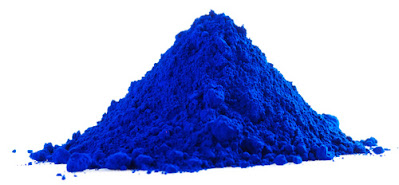Ultramarine Pigments
Ultramarine pigments are a group of blue pigments that have been used in art and various other applications for centuries. They are known for their intense blue color and were historically made from the semi-precious gemstone lapis lazuli, but modern versions are synthetically produced.
Here are some key points about ultramarine pigments:
· Origin: The name “ultramarine” comes from the Latin phrase “ultramarinus,” which means “beyond the sea.” It refers to the fact that the pigment was originally imported from Asia, mainly from Afghanistan, where the lapis lazuli mines are located.
· Historical significance: Ultramarine has a long history of use in art, dating back to ancient times. It was highly prized and often reserved for use in the most important and sacred artworks, including religious paintings and manuscripts.
· Lapis Lazuli extraction: Lapis lazuli is a deep blue metamorphic rock containing significant amounts of the mineral lazurite, which is responsible for the blue color. To obtain ultramarine pigment from lapis lazuli, the rock was ground into a fine powder and then treated with various chemicals to extract the blue component.
· Synthetic production: Due to the high cost and limited availability of natural lapis lazuli, efforts were made to develop synthetic ultramarine pigments. In the early 19th century, a French chemist named Jean-Baptiste Guimet successfully synthesized a synthetic version of ultramarine, which became widely used and more affordable than the natural counterpart.
· Types of ultramarine pigments: There are two main types of synthetic ultramarine pigments — Ultramarine Blue (PB29) and Ultramarine Violet (PV15). Ultramarine Blue is the most commonly used and known for its deep, vibrant blue color. Ultramarine Violet has a reddish-blue hue and is used less frequently.
· Versatility: Ultramarine pigments are used in various applications beyond art, including in the cosmetic and industrial sectors. They are used to color plastics, coatings, and textiles due to their stability and resistance to fading.
· Lightfastness: Ultramarine pigments are generally considered to have good lightfastness, meaning they resist fading when exposed to light. This property is essential for the longevity of artworks and other products.
It’s worth noting that with advancements in modern pigments and colors, there are now various alternatives to ultramarine pigments with similar properties and colors. However, ultramarine pigments still hold significant historical and artistic value.
Visit at :- https://medium.com/@seo.ultramarinebluepigment/ultramarine-pigments-19dd588f941b




Comments
Post a Comment